Posts Tagged irrigation
Fall Landscaping Prep: Preparing Your California Yard for the Changing Season
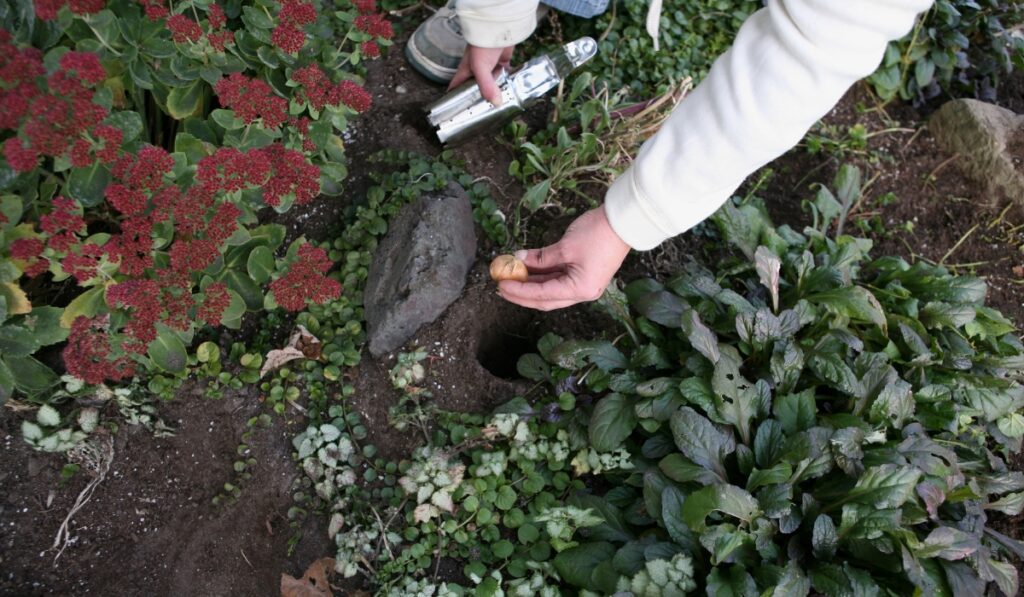
As the summer sun begins to soften and the days grow shorter, it’s time to shift our focus to fall landscaping preparation. At DK Landscaping, we understand the importance of transitioning your yard smoothly into the cooler months, ensuring a healthy and beautiful landscape that thrives through winter and bursts with life come spring.
Cleaning Up Summer Debris
The first step in fall landscaping prep is a thorough cleanup. Remove any fallen leaves, spent flowers, and debris from your yard. This not only tidies up the space but also helps prevent pests and diseases from overwintering. Pay close attention to areas around trees and shrubs, where fallen leaves can accumulate and create a damp environment that encourages fungal growth.
Preparing Soil for Fall Planting
Fall is the perfect time to revitalize your soil and prepare it for new plantings. Incorporate organic matter like compost or well-rotted manure into your garden beds. This improves soil structure, drainage, and nutrient content, providing a nourishing environment for your plants to establish strong roots.
Protecting Plants from Early Frosts
While California enjoys relatively mild winters, early frosts can still occur, especially in inland areas. Take preventative measures to protect sensitive plants:
- Covering: Use frost blankets or burlap to cover tender plants during cold nights.
- Mulching: Apply a thick layer of mulch around the base of plants to insulate the roots and protect them from freezing temperatures.
- Moving Container Plants: Bring potted plants indoors or to a sheltered location to shield them from frost.
Additional Fall Landscaping Tips
- Lawn Care: Aerate your lawn to improve drainage and reduce compaction. Overseeding can help thicken thin or bare spots.
- Pruning: Prune summer-flowering shrubs and trees after they finish blooming to encourage new growth in the spring.
- Irrigation: Adjust your watering schedule to accommodate cooler temperatures and reduced plant needs.
- Pest and Disease Control: Monitor your plants for signs of pests and diseases, and take action as needed.
DK Landscaping: Your Partner in Fall Landscape Preparation
Preparing your landscape for fall can be a daunting task, but DK Landscaping is here to help. Our team of experienced professionals can assist with everything from debris removal and soil preparation to plant protection and winterization. We’ll ensure your yard is ready to face the changing seasons and emerge healthy and vibrant in the spring.
Contact us today for a free consultation and let’s get your landscape ready for a beautiful fall and winter.
Remember, fall is a time of transition and renewal in the garden. By taking the necessary steps to prepare your landscape now, you’ll set the stage for a thriving and beautiful garden in the seasons to come.
Sustainable Landscaping Practices for August: Thriving in California’s Dry Heat
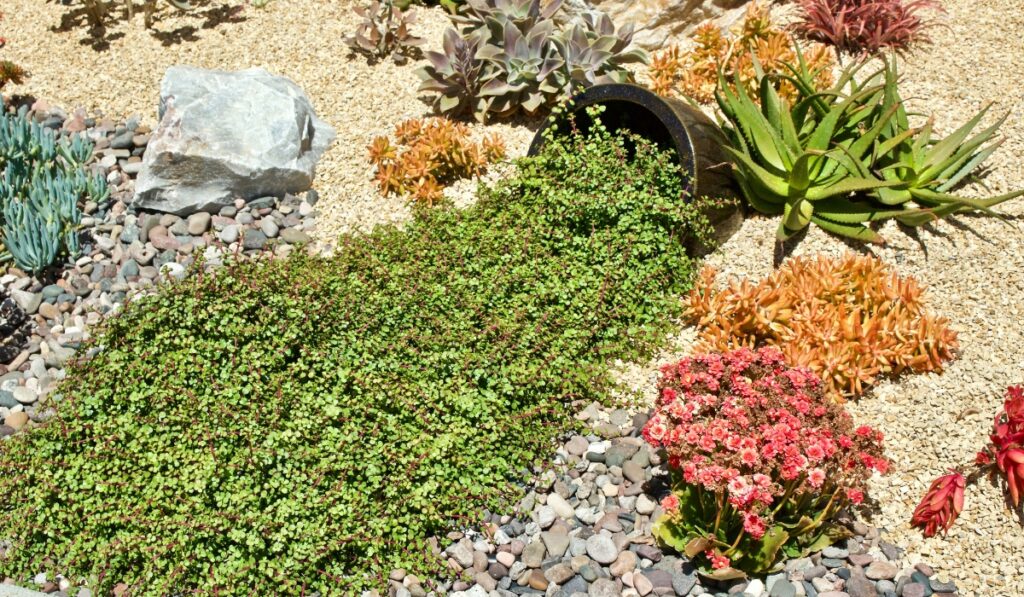
As Californians, we’re all too familiar with the challenges of August’s scorching temperatures and persistent drought conditions. While our landscapes may be feeling the heat, there are plenty of sustainable practices we can adopt to not only keep our gardens thriving but also nurture the environment. At DK Landscaping, we believe in creating beautiful landscapes that are in harmony with nature, and August is the perfect time to implement eco-friendly choices.
The Importance of Water Conservation
Water is a precious resource, especially during the peak of summer. Traditional landscaping practices often rely heavily on irrigation, putting a strain on our water supply. By embracing sustainable practices, we can significantly reduce our water consumption and help protect this vital resource.
Key Sustainable Landscaping Practices for August
Let’s delve into some essential eco-friendly choices you can make in your landscape this August:
1. Efficient Irrigation:
- Upgrade your irrigation system: Consider switching to drip irrigation or soaker hoses, which deliver water directly to the roots, minimizing evaporation and runoff.
- Water deeply and less frequently: This encourages deeper root growth and reduces water waste.
- Water in the early morning or late evening: Avoid watering during the hottest part of the day to prevent evaporation.
- Monitor soil moisture: Use a moisture meter to check soil moisture levels before watering.
- Adjust your irrigation schedule: As temperatures cool down in late August, gradually reduce watering frequency.
2. Mulching:
- Apply a thick layer of mulch: Mulch helps retain soil moisture, suppress weeds, and regulate soil temperature. Organic mulches like wood chips or shredded leaves also improve soil health as they decompose.
3. Drought-Tolerant Plants:
- Choose native and adapted plants: These plants are naturally suited to California’s climate and require less water.
- Group plants with similar water needs: This allows for more targeted and efficient irrigation.
- Consider replacing lawns with low-water alternatives: Opt for groundcovers, native grasses, or permeable hardscaping.
4. Rainwater Harvesting:
- Install rain barrels or cisterns: Collect rainwater from your roof to use for irrigation later.
- Create rain gardens: These shallow depressions capture and filter rainwater runoff, reducing erosion and providing habitat for wildlife.
5. Composting:
- Start a compost pile: Turn kitchen scraps and yard waste into nutrient-rich compost to improve soil health and reduce the need for synthetic fertilizers.
6. Organic Fertilizers:
- Use organic fertilizers and soil amendments: These products nourish your plants without harming the environment.
7. Reduce or Eliminate Pesticide Use:
- Embrace Integrated Pest Management (IPM): This approach focuses on prevention and natural controls to minimize pesticide use.
- Attract beneficial insects: Plant flowers that attract ladybugs, lacewings, and other insects that prey on pests.
DK Landscaping: Your Partner in Sustainable Landscaping
At DK Landscaping, we are committed to creating sustainable landscapes that are both beautiful and environmentally responsible. We can help you implement these eco-friendly practices and design a garden that thrives in California’s unique climate.
Contact us today to schedule a consultation and let us help you create a sustainable oasis.
Remember, every small step towards sustainability counts. By implementing these practices in your landscape, you can make a positive impact on the environment while enjoying a beautiful and thriving garden.
The Ultimate Guide to Year-Round Yard Cleanup and Maintenance
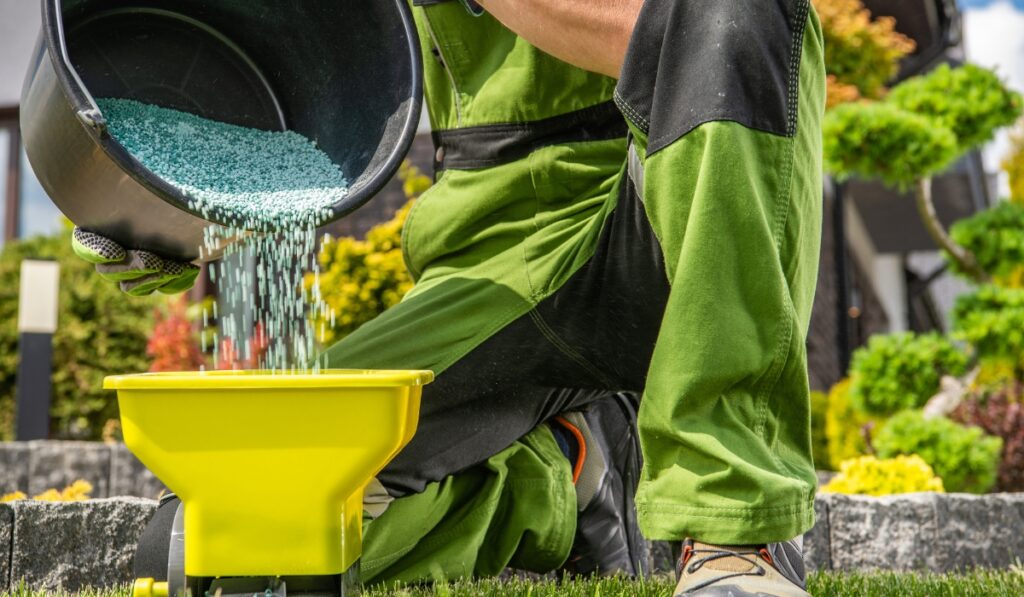
Maintaining a beautiful yard is a year-long commitment that requires careful planning and execution. With each season comes a new set of challenges and opportunities to enhance your outdoor space. This comprehensive guide will walk you through the essentials of year-round yard cleanup and maintenance, ensuring your garden thrives in harmony with the changing seasons.
Spring Awakening
As spring unfurls its fresh canvas, the awakening of your garden heralds a season of rebirth and rejuvenation. This period is pivotal for setting the tone for a flourishing garden throughout the year. Begin with a thorough cleanup, removing winter’s remnants—such as fallen branches, leaves, and other debris—to clear the way for new growth. Pruning plays a crucial role in spring; it not only shapes your plants but also promotes healthy development and blossoming. However, it’s essential to know which plants benefit from spring pruning, as timing can affect flowering and growth.
Aeration is another vital task; it alleviates soil compaction, allowing air, water, and nutrients to penetrate the grass roots, laying the groundwork for a vigorous lawn. Early spring is also the ideal time to rejuvenate your garden beds, preparing them for the season’s planting. Incorporating organic matter or compost improves soil health, providing a nutrient-rich environment for plants to thrive.
As new life sprouts in your garden, consider the layout and plan for seasonal additions. Early spring is an opportune moment to plant hardy annuals and perennials, which will establish themselves quickly in the cool, moist soil, ensuring a vibrant display as the seasons progress. By embracing these springtime rituals, you cultivate not just a garden but a sanctuary that grows in beauty and vitality with each passing year.
Summer Vigilance
In the height of summer, your garden enters a phase of intense growth and vitality, necessitating vigilant care to sustain its beauty and health. This period requires a proactive approach to weed management. Regularly removing weeds prevents them from competing with your plants for essential nutrients and water. Mulching becomes an indispensable ally, serving a dual purpose: it conserves soil moisture, crucial during the sweltering days, and acts as a natural barrier against the emergence of unwanted weeds.
Efficient water management is key during this time. Checking and adjusting your irrigation system ensures that your garden receives the right amount of water without waste, a critical consideration during times of potential drought. Adjusting watering schedules to the cooler parts of the day minimizes evaporation and maximizes the water’s benefit to your plants.
Mowing practices should adapt to the summer conditions as well. Keeping the grass at a slightly longer length than usual helps to protect the roots from the intense sun and heat, promoting a healthier, more resilient lawn. This approach not only enhances the green lushness of your garden but also supports its overall ecosystem, encouraging a balance between beauty and sustainability as the season unfolds.
Autumn Preparation
As autumn paints the landscape in vibrant hues, it’s a signal to start preparing your garden for the impending cold. This season is crucial for maintenance tasks that protect and invigorate your garden’s future growth. Raking and removing fallen leaves are essential to avoid mold and fungus, which thrive under damp, decomposing foliage. Autumn’s cool weather is also ideal for overseeding and fertilizing your lawn, setting the stage for robust, green growth when spring arrives.
Planting bulbs during this time promises the reward of early blooms, offering a burst of color at winter’s end. Additionally, autumn is when you should begin winterizing tasks, such as protecting sensitive plants from frost and preparing irrigation systems for the freeze, ensuring they remain functional for the next growing season. This proactive approach not only preserves your garden’s beauty and health through the winter but also lays the groundwork for a flourishing landscape in the year ahead.
Winter Care
Winter’s quiet might suggest a pause in garden activity, but it’s actually a critical period for protective measures and forward planning. Wrapping plants in burlap or frost cloths shields them from the harshest winter elements, preserving your garden’s vitality. This dormant season offers a valuable opportunity for reflection and strategy: assess the past year’s successes and areas for improvement. It’s a perfect time to dream up new garden layouts or consider different plant varieties that could enhance your garden’s diversity and resilience. Planning during these colder months ensures that you’re ready to spring into action when the weather warms, with a clear vision for your garden’s future.
Flood-Resistant Yard Maintenance Tips For the Rainy Season
Mother Nature can be unpredictable. And if you live in Rohnert Park, your home could be part of 4,813 properties with a 26% risk of flooding. Water rushing through your yard, threatening to wash away all your hard work, and turning your lush oasis into a waterlogged nightmare, becomes a significant concern.
While there’s not much you can do to control the weather, there are steps you can take to ensure your yard is as flood-resistant as possible. Here are practical strategies to fortify your yard against floods, protect your precious plants, maintain proper drainage, and prevent erosion to keep your outdoor space looking its best, even when the water starts rising.
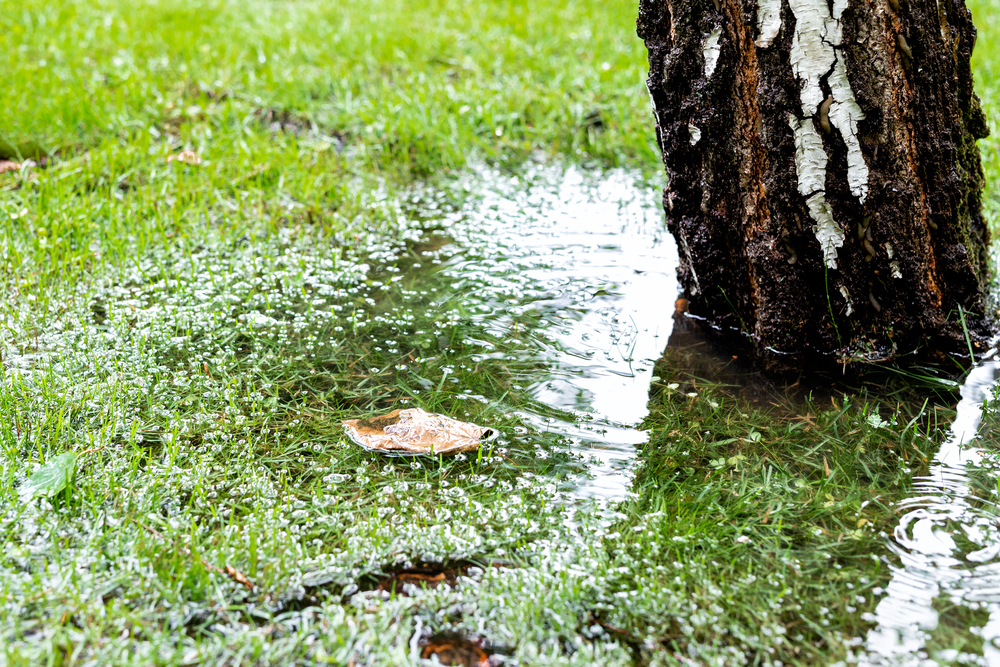
Choose Flood-Resistant Plants for Your Yard
Flood-resistant plants possess unique characteristics that allow them to withstand and thrive in waterlogged conditions, ensuring the resilience of your outdoor space during heavy rainfall or flooding events. Here’s how it works:
- Enhanced drainage: Water-loving grasses like blue grama, willows, cypress, and shrubs like elderberry have well-developed root systems that improve soil structure and drainage. Their extensive root networks act like natural sponges, absorbing excess water and preventing it from pooling on the surface. This reduces water accumulating in your yard, eliminating the potential for flooding.
- Erosion control: Heavy rainfall erodes soil, washing it away, which causes damage to your yard and nearby areas. Plants with deep and fibrous root systems help anchor the soil, preventing erosion while maintaining the integrity of your landscape.
- Water filtration and nutrient retention: Flood-resistant plant root systems act as natural filters, removing pollutants and sediment before the water reaches groundwater sources or nearby water bodies. These plants also absorb excess nutrients, like nitrogen and phosphorus, commonly found in stormwater runoff, effectively preventing water pollution.
When picking vegetation for your yard, opt for species native to Califonia, like buffalo grass. They have evolved and adapted to thrive in the local climate, soil conditions, and rainfall patterns, making them inherently more resilient to natural disasters.
Incorporating native flood-resistant plants further aligns your yard with the surrounding ecosystem, promoting biodiversity. Take advantage of online tools to help you find the most appropriate native species for your specific region in California.
Better Your Drainage System
A qualified yard maintenance rohnert park landscaper can help you improve how water moves and drains within your yard, effectively mitigating the risk of flooding and minimizing potential damage. Landscaping strategies to improve yard drainage include:
- Grading and contouring: Proper grading and contouring direct water towards suitable drainage outlets, such as swales or storm drains. The land should slope away from the center of the yard, guiding water to flow away from vulnerable areas. A skilled landscaper will evaluate the topography, re-level any spots where water pools, and make adjustments to ensure optimal drainage paths.
- Install French drains or catch basins: French drains and catch basins are effective drainage solutions that divert excess water from your yard. French drains consist of perforated pipes covered by gravel, facilitating water absorption. Catch basins, on the other hand, are underground structures that collect surface water and direct it to a suitable outlet. A professional can strategically install these drainage features in areas prone to flooding, preventing water from accumulating and causing damage.
- Gutter and downspout maintenance: Properly functioning gutters and downspouts are vital for effective drainage. A landscaper inspects and cleans your gutters regularly, freeing them from debris that causes blockages. Consider installing downspout extensions to direct water into proper drainage channels, preventing water from running into the yard.
- Rain gardens and bioswales: Rain gardens and bioswales are innovative landscaping techniques that improve drainage while enhancing your yard’s aesthetics. Rain gardens are shallow depressions filled with water-tolerant plants that can absorb and filter water. Bioswales are channels designed to collect and divert water, allowing it to infiltrate the ground gradually. Both features contribute to efficient water management, reducing the risk of flooding.
- Permeable paving: Replace impermeable surfaces, such as concrete or asphalt, with permeable alternatives like gravel, permeable pavers, or porous asphalt. These materials allow water to infiltrate the ground instead of pooling on the surface. Permeable paving also aids in drainage but also helps recharge groundwater resources.
- Add rain barrels: During heavy rains, the barrels capture and store stormwater that would otherwise flow into your yard, contributing to localized flooding. These innovative solutions save water, reduce water bills, promote sustainable gardening, and benefit soil and plant health.
Apply Hardwood Mulch
When applied as a protective layer on the soil surface, hardwood mulch acts as a barrier, preventing rainwater from directly impacting the soil and grass. Instead, water penetrates the soil gradually, promoting better infiltration and reducing runoff.
By improving soil structure, hardwood mulch helps create a more porous and well-drained soil, increasing the yard’s capacity to absorb and retain water during heavy rains. Hardwood mulch is preferred as it lasts longer and resists floating away better than lighter mulches.
Find a Qualified Yard Maintenance Rohnert Park Landscaper
From selecting water-loving plants to improving drainage systems, taking proactive measures is key to creating a flood-resistant yard. To guarantee the best results, seek the assistance of a qualified, credible, and licensed landscaping company. Take action today and partner with professionals to transform your yard into a beautiful, resilient haven that stands strong against the forces of nature.
Landscape Irrigation: Best Practices and Tips
Mother Nature provides water for plants to help them grow. However, rainfall may not always be enough to maintain a healthy landscape and eye-catching beauty. That’s where irrigation comes in.
When done properly (preferably by a landscape expert), irrigation helps plants thrive when natural sources can’t satisfy your landscape’s water needs. To give you insights into the best watering techniques, we walk you through the following:
- Proper irrigation practices
- Water-saving irrigation techniques
- The ideal time to water your yards for the best results
If you don’t have the time to deal with irrigation equipment or implement best practices, a landscape maintenance company can do the heavy lifting. That said, understand what irrigation is and why it is essential in maintaining landscape beauty.
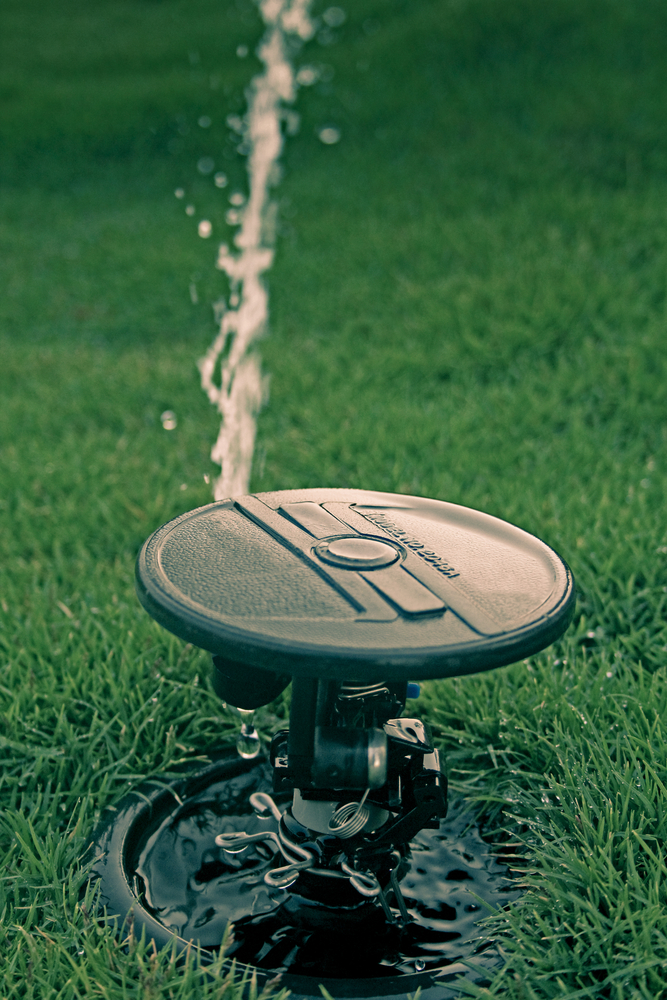
What Is Irrigation? (And Why It’s Important)
Relying on rainfall alone as your plants’ water source may not be enough during hot seasons or in areas with sparse or seasonal precipitation. In that case, watering your yards or gardens using pipes, sprinklers, or other artificial methods helps improve plant growth and quality.
Irrigation keeps your outdoor space looking pristine and green. When done properly (like with an expert), it can prevent patches in your landscape commonly caused by insufficient water. That said, you only enjoy the benefits of irrigation if you implement the right practices.
Top 3 Landscape Irrigation Tips
Here are some of the best practices when implementing landscape irrigation:
1. Leverage Mulching When Watering Specific Landscape Areas
Mulching means covering the soil surface around plants with an organic or synthetic substance to help conserve moisture by reducing evaporation after irrigation. You can buy mulch on Amazon and use it to preserve moisture when watering landscape trees, annuals, perennials, or woody plants.
When mulching is a water-saving technique, it’s important to do it right. Your mulch should not touch the stem of the plants or the trunks of landscaping trees, an improper practice called volcano mulching. Ensure the mulch is only covering the roots. That way, you prevent wet conditions on plant stems that can cause diseases.
2. Consider Drip Irrigation to Save Water
Drip irrigation is a watering method that uses a system attached to a water source and its components arranged throughout your landscape. Because it supplies water directly to plant roots, drip irrigation prevents water loss from run-off, evaporation, and overwatering. For this reason, a well-installed drip system can use up to 50% less water than conventional sprinklers.
3. Take Advantage of Regular Landscape Maintenance
Routine system checkups ensure your irrigation equipment is working correctly. Regular assessment helps identify and fix water-wasting problems before they impact your water bill.
Consider hiring a landscape maintenance company to inspect your systems at least yearly, especially at the beginning of the irrigation season. The company will check whether your irrigation system works efficiently and adjust features accordingly. The professional can also repair leaks and other system problems to save water.
However, not all landscaping companies are the same. Compare your options and choose one that is experienced and has an excellent track record. How long they’ve been in the industry, and online reviews should tell you who to hire.
Bonus Tip
Another way to save irrigation water is to use native plants. These plants are well adapted to the local climate and soil conditions. Therefore, they can thrive in their original environment.
For this reason, they require much less watering than foreign species because they can easily survive with the water supplied naturally by Mother Nature in their native environment. For instance, many native Midwestern plants in the US have deep root systems, which increase the soil’s capacity to store water.
What’s the Ideal Time of Day to Water Your Garden or Yard?
Irrigate in the morning, especially if you use overhead irrigation methods like sprinklers. Because leaf wetness increases the risk of plant diseases, irrigating in the morning gives plants enough time to dry during the day. Additionally, morning is the best time to irrigate because it allows water to sip into the soil—irrigating in mid-day heat when the high evaporation rate results in a lot of moisture escaping into the atmosphere.
Reliable Landscape Irrigation Services
Although it is possible to design a landscape that depends solely on rainfall, irrigation is sometimes necessary to maintain landscape health and aesthetic beauty. It supplies water to plants when needed most to ensure they thrive, even during seasons with much heat and little-to-no rain.
That said, proper landscape irrigation requires skills and enough time investment to get it right. If you don’t have time to implement irrigation best practices or just want to avoid guesswork, it’s best to hire a landscaping professional.
The professionals ensure your irrigation system is installed and functioning correctly. It can also be a way to identify water-saving opportunities in landscape irrigation. We specialize in water-saving landscape design (xeriscape), maintenance, repair, and irrigation. Contact us today to schedule an appointment.
Turn to the Pros for a Professional Sprinkler System Design
Xeriscaping is a water-wise approach to gardening that reduces water use and maintenance in your front and backyards. An efficient sprinkler system design helps you maintain a healthy landscape, saves you money on your water bill, and helps maintain your home’s curb appeal.
Working with a professional sprinkler system design and installation firm has many benefits, including:
- Working with certified designers who can help you create a personalized, economical solution for your sprinkler system.
- Access to experts who understand the most efficient layout for irrigation system elements.
- Layout designs and maps that are minimally invasive.
- Identifying and maximizing coverage zones and spray patterns.
- Accurately measuring the landscape so the job is done right the first time.
Basics of Sprinkler System Design

There’s a lot that goes into designing, installing, and maintaining the right sprinkler system for your home. In addition to the traditional spray system, low water use irrigation systems often utilize features like smart timers and drip systems.
A good irrigation system not only improves water use efficiency, it also protects the water’s quality and is sensitive to the environment. The goal is to maintain a healthy, functional landscape without exceeding minimal water requirements of the plants or the maximum water allowance in your area.
Here are some of the points you should discuss with your sprinkler system designer .
- What are the ideal areas for the plants you want to install and how will the system be designed to avoid wasting water on plants and shrubs that require different needs?
- Is your home’s water pressure able to handle the proposed sprinkler system components? For example, high pressure can cause water to drift and blow away from the area you want to water.
- Does it make sense to install a rain sensor that pauses the system whenever it rains?
- Does the design work to prevent overspray onto patios, decks, driveways, paths, and sidewalks?
You’ll also want a watering schedule for your timed system. One of the greatest recent innovations has been the introduction of smart controllers into sprinkler system design. These systems decrease water use by drawing on data from weather and soil moisture sensors to accurately determine your landscape’s water needs, delivering just enough moisture at just the right time. You can even monitor and control different zones from your mobile device!
Learn More
Designing, installing, and maintaining a sprinkler system is not a small investment but it can be a smart one that will serve you for years to come. No one knows better than California homeowners that water is an extremely valuable resource for all our communities. Working with a professional sprinkler system design and installation company like DK Landscaping ensures you get an irrigation system that is perfect for all your landscape needs.
If you’re ready to get started on designing and installing a new water-smart irrigation system for your Sonoma County home, contact us today. We’d love to show you how a sprinkler system creates not only a more beautiful yard but a more beautiful life for you and your family!
Irrigation Installation for Corporations
Irrigation installation involves meticulous planning and setting up a layout that can consistently provide water for a landscape area. Corporations and establishments are responsible for taking care of their lawns as long as the business is up and running. It is quite tedious to get a steady source of water for landscapes, especially in an area that is short of water supply. Also, some plants need adequate water, while others do not require much because of their ability to conserve water. An administrator of a corporate entity needs to understand and install irrigation according to the needs of the lawn plants and the office location. Corporations have responsibilities to handle, so administrators should hire a lawn care specialist that can assist them with the irrigation process.
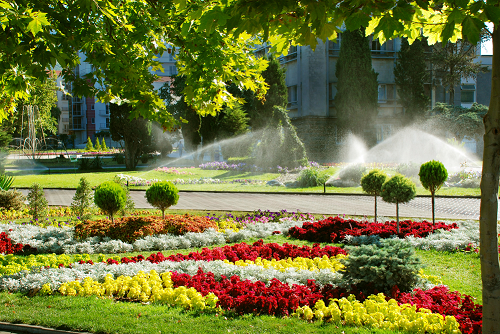
To deploy an irrigation system, the manager, the representative of the firm, and the supervisor of the installation company will come together to discuss how the project will pan out. The process usually begins with examining the site topography and establishing where the service provider will install the water meter. The service provider is also responsible for laying out the design and setting up the plumbing part of the project. With the aid of technology, one can design an irrigation system that suits a landscape with a computer software package. The design must show where the power source, valves, mainlines, sublines, sprinkler heads, and other peripheral connections.
The service provider should be able to advise the corporation on the best method of irrigation for your lawn. When we have to consider expenditure, sprinkler irrigation systems are more expensive than drip irrigation because of the plumbing work and automated controlling unit. In 2020, a sprinkler system requires an average cost of $3000 or more per one-quarter of an acre of land, while a drip method requires a lesser budget of $2000 per acre of land. So, an administrator may intend to choose the subsurface drip method based on cheap quotation; however, if one considers the benefit of control and flexibility which sprinkler method offers, then he/she may decide to opt for the latter. Lawn care specialists prefer to harness this method due to the two reasons listed. Drip irrigation is not ideal for lawn maintenance, but it will help to sustain the growth and lushness of flower beds and shrubbery.
Besides, the supervisor of the installation project can adopt hydro zoning for the sprinkler system. Hydrozoning is a way of segregating plant species based on the quantity of water they need to survive. So, the lawn expert cultivates each plant species together to form an assemblage. Then, the sprinkler directs the water to each plant cluster so that the plants will generally have sufficient water. Contact us for more information.
Fall Landscaping Tips and Tricks
Sonoma County embraces the fall season as temperatures begin to dip and daylight begins to wane. It marks a time of change when our summer perennials and annuals die back, the leaves fall from the trees, and our irrigation systems get turned down.
Fall is an opportune time when we should welcome a change in landscape by dressing up your yard with some of fall’s favorites like mums, gourd’s, pumpkins! They are everywhere, in a variety of colors, from yellow to deep red.
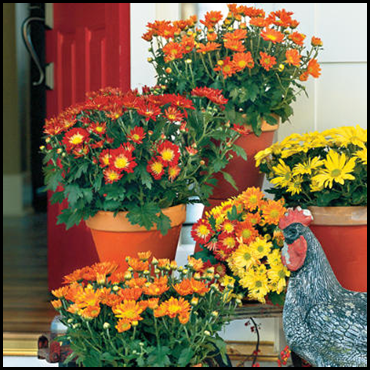
MUMS are inexpensive and can be purchased just about everywhere. They make for great boarders, or can be planted in mass for a striking display. And the best thing, they are hardy perennials and can withstand low temperatures and frost. If planted early enough they will come back next spring. As an alternative to mums, you can use Coleus, Sedum, Firethorn, Snap Dragons, and Pansies to add stunning beauty to your landscape. Throw a few pumpkins in the mix and you’ve got a gorgeous garden display.
TREES are another way to spruce up your landscaping. They are not only beautiful but require less work than your summer-time trees. DK Landscaping recommends Hickory, redbud, sugar maples, and birch trees create marvelous landscapes of fall color. 
Lastly, don’t forget to incorporate hay bales, pine straw, pumpkins, gourds, cornstalks and potted plants – all that the harvest season has to offer!
Just following these simple fall tips and tricks will make your landscape pop with color, and keep your landscape looking beautiful and colorful all season long. It will make your home extra inviting for visitors including some little ghosts and goblins on Halloween night.

DK Landscaping is your Northern California’s premier’s landscaping company. For more information and/or a free consultation how we can add a little color to your fall life, please give us call (707) 280-3632.
Springing Forward
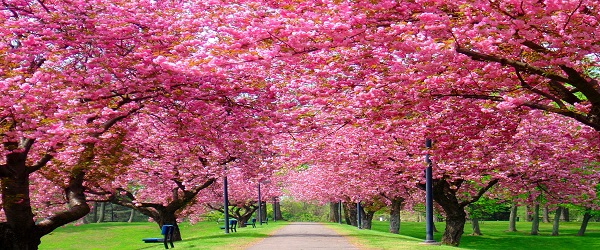
Spring is an exciting and one of the most beautiful times of the year. The days are becoming longer, the weather is getting warmer, you awake to birds chirping in the morning, and spring blooms and lush green plants come alive in your landscape.
After a long winter, your lawn and gardens may be looking a big ragged and dreary. So before you pull out your lawn furniture from storage, get in the “spring spirit” by getting your yard looking spectacular. Help your lawn, trees and shrubs get off to a healthy growing season with these six luscious landscaping tips:
1. ASSESS YOUR TOOLS: Check, maintain, sharpen and repair your landscaping tools for a smooth spring and summer experience. This includes your lawnmower, weeding/pruning tools, rake and edger.
2. CLEAN UP: Clean out dead leaves, branches, trash or anything else that could impair your garden and lawn’s growth. Prune
3. WEED CONTROL: Uproot any existing weeds you find out of flower beds and check your lawn for any weed growth, whether they’re leftover stalks from last year or brand-new shoots. Once weeds are clear, DK Landscaping recommends spending between 10-15 minutes a few times per week to prevent new weed growth in your garden.
4. FERTILIZE: Make sure your early spring fertilizer has less nitrogen and more phosphorus to promote strong roots. Be sure to keep fertilizer on target to prevent run-off, and sweep fertilizer granules that may reach pavement back onto your lawn. Give your lawn a slow, steady watering about once a week, but adjust depending upon rainfall, grass and soil type in your area.
5. MULCH: A fresh layer of mulch can take any flower bed from drab and dreary to beautiful. DK Landscaping suggests applying four inches of mulch over the top soil, which will help retain moisture and prevent growth of those pesky weeds.
6. IRRIGATION: Check your in-ground sprinkler system and make sure all your sprinklers are working properly. Remove any overgrown grass that may have covered up any part of the pop-up heads. Check the sprinkler heads for cracking and breakage from last year and have them replaced if needed.
It’s the perfect time in Northern California to gather up tools, slide into your boots, pull on your garden gloves, and enjoy that first breath of spring.
DK Landscaping specializes in landscape maintenance, irrigation, clean-up and colorscape in Sonoma County. Contact Kathy or David Lee for more information and a consultation on your landscaping (707) 280-3632.





